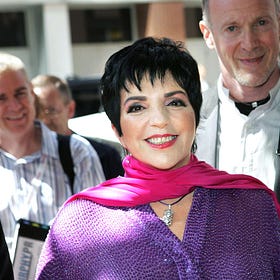Music Curiosity Still Matters
Jay Ray muses on Liza Minnelli, how music curiosity connects genres, honors Black creativity, and, ultimately, deepens listening and empathy.
This post contains affiliate links. Making a purchase through links may earn Queue Points a commission.

I grew up in a time when being a music lover often meant being a student of the sound, too. In the 80s and 90s, the rise of hip hop made this even more critical, as sampling became part of my listening experience. I didn’t just enjoy a song; I wanted to know where it came from and how it connected to everything else in the cultural universe of the moment and of the past. That curiosity was part of the joy. I had to learn about artists across genres and generations because context was how I unlocked deeper meaning. But today, when infinite musical catalogs are a tap away, the irony is that curiosity has become the rarest commodity in the room.
Nowhere is that loss more apparent than in watching social media engagement with artistry that’s rooted in historical exchange. Take, for example, Liza Minnelli. Minnelli’s career carries a fascinating thread of musical cross-pollination, one that ties her directly to the creations of Black musicians whose work shaped and defined 20th-century American sound.
On the latest episode of Queue Points, we explore Liza Minnelli’s performances of songs by Black artists, examining how she interpreted and honored that music. These performances sat within a musical continuum where popular entertainment was continuously enriched (and complicated) by the innovations of Black creatives. Minnelli’s repertoire reveals the deep interdependence between American pop culture and Black genius.
Liza Minnelli’s Black Music Crossovers
In this new episode of Queue Points, we shine a spotlight on the iconic Liza Minnelli and her surprising, joyful intersections with Black music. While Broadway is Liza’s home, she’s never shied away …
For Queue Points, engaging with this kind of story is more than nostalgia. Episode by episode, we are reclaiming the stories of how music evolves and circulates as an archiving practice. When you understand that the new songs you love today probably trace their DNA to gospel, soul, blues, or early jazz, the listening experience transforms. Songs stop existing as isolated products and start resonating as living artifacts of human exchange.
“When you understand that the new songs you love today probably trace their DNA to gospel, soul, blues, or early jazz, the listening experience transforms. Songs stop existing as isolated products and start resonating as living artifacts of human exchange.”
- Jay Ray
The danger of our era’s overabundance is that information is flattening into background noise to fill space or our own emptiness. The endless playlists and a reliance on algorithms cause many listeners to drift through sonics without ever asking simple questions: Who wrote this? What cultural moment made this sound possible? Who was erased along the way? Without this curiosity, we lose touch with the human stories that build the soundtrack of our lives.
Understanding music history deepens empathy. Because to really hear music is to know that nothing we love exists in a vacuum. Every note has a lineage. And when we choose to care about those origins, we don’t just become better listeners, we become better keepers of the culture.
Oh, and bring back liner notes, too. We need them now more than ever.




